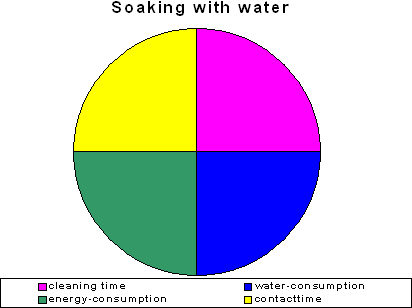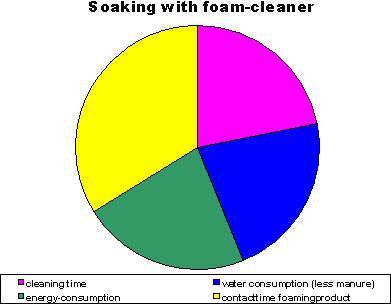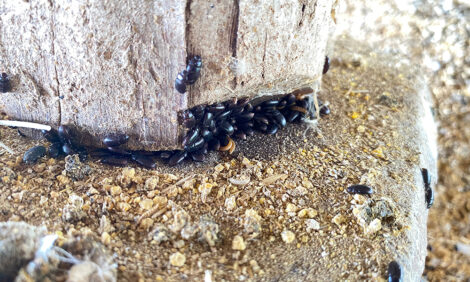



Hatchery Hygiene: Product Choices And Procedures
By Luc Ledoux, General Sales Manager, CID LINES nv - It starts before the egg ! The starting point of hatchery hygiene is obviously a healthy breeder flock.
This should be combined with optimum biosecurity (including thorough farm cleaning and disinfection programs) and also precautions regarding all the vectors that threaten the eggs before they even arrive in the hatchery.
The precious hatching eggs are at risk from:
- External contamination through the pores and hairline cracks in the shell.
- Vertical transmission (from infected flocks)
- Internal contamination (of yolk and albumen)
- Vectors such as hands, trays, vermin, transport equipment, etc.
HACCP requires biosecurity measures for nests, egg belts, egg collection tables and the hands that touch the eggs. The equipment can be sprayed with a non-corrosive, full spectrum disinfectant with residual action The hands should first be washed with non-perfumed soap and then disinfected with an alcohol based liquid or gel product . The gel allows for a better penetration of skin pores and under nails, where most micro-organisms are found.
The Dutch and Belgian "IKB" (Integrated Chain Control) assurance scheme even requires a specific physical lay-out for the hatchery (avoiding cross-contamination from dirty to clean zone), prevention of incoming infections, minimizing horizontal infections and keeping records on egg batches and chick flocks, as well as GVP (Good Veterinary Practice).
In the hatchery
Ideally, eggs should be disinfected as soon as possible after collection at the breeder farm, and again upon arrival at the hatchery. The hatchery is the crucial funnel, collecting eggs from many breeder farms (or even imported eggs) and distributing day old chicks to many farms.
The incubators do not only incubate embryos, but also many bacteria. In multi-stage setters, this growth of bacteria is uninterrupted, unless regular spray or mist disinfection is carried out and exploded eggs are removed and their debris is cleared up. Fumigation in the setter with formaldehyde, a carcinogenic product, cannot be done between 24 and 96 hrs of embryo development. Moreover, formaldehyde has no residual action so does not prevent recontamination.
In the hatchers, at "pipping" the germ counts explode logarithmically. Remember that bacteria can double every 20 minutes!
Table 1 shows what bacteria need for growth and how we can reduce this growth:
| Table 1: factors encouraging bacteria and solutions | ||
| Food | Yolk & albumen | Remove waste, keep clean |
| Water | In egg and via humidifier | Avoid leakage, treat water |
| Temperature | In incubator | Store eggs in cool and clean area |
| Shelter | In eggshell, fittings, ducts,... | Clean and disinfect eggs, rooms, machines & equipment |
| Air | Ventilation of machines & building | Spray or fog in machines, mist in rooms, renew air filters |
The hatchery lay-out should consider 4 flows:
- product flow : no crossing of eggs and chicks
- people flow: from clean (= egg) zone to dirty (= chick) zone, ideally with colour coded areas, with showers, handwashing facilities and foot dips at the entrance and foot dips between every production zone for the personnel. Truckdrivers should never enter the building.Offices, showers and toilets should ideally be separated.
- airflow : positive pressure in the clean zone with no air intake near a dirty zone exhaust.
- waste water flow : separate drains for clean and dirty area
Product procedures
Hatching eggs can be washed with alkaline products, either chlorinated or non-chlorinated, based on potassium hydroxide . Proper temperature control (42 -45°C or 108 - 113°F) is crucial. Contact time should be limited to approx. 5 minutes, in order not to affect the cuticle. Disinfection afterwards should be at a slightly higher temperature, to prevent the product from entering the pores (45-47°C or 113 - 117°F); after rinsing at the same temperature. Ideally, products with a residual action should be used, to prevent early re-contaminatio. As an alternative to formaldehyde fumigation, the Dutch Research Institute "Praktijkonderzoek Pluimveehouderij Beekbergen" found CID 2000 in an ultrasonic fogger "as efficient as formaldehyde", without affecting hatchability (1).
Trays, crates and baskets can be washed with the same chemical as the eggs. It is important that the products do not foam when machine washing . Obviously, temperatures should be higher (50-60°C or 110 - 140°F) but not so high as to damage the plastic. Ideally, these alkaline products which remove mainly fat and proteins should be rotated with an acid, non foaming detergent to remove mineral deposits (lime-scale, iron,) and residues from the alkaline cleaners. Hatcher baskets and chick boxes should be disinfected immediately after washing by spraying. If setter trolleys and trays go back to the farm, they must be disinfected. If farm buggies are being used, they should equally be disinfected.
Floors, walls and setters can be washed with a "universal" cleaner, designed specifically to remove the typical debris of the "clean zone" (yolk, albumen, blood). This detergent should also be suitable for application with a foam lance or scrubbing machine and therefore have good adhesion . It is advisable to alternate once per month with an acid foame. A good foam formulation will cling to ceilings and vertical surfaces, allowing a longer contact time for the chemical to act.
The characteristics of detergents are described in Table 2 below:
| Table 2: Characteristics of Detergents | ||
| Wetting: | Decrease surface tension | |
| Dispersing: | Splits up dirt particles | |
| Emulsifying: | Splits and suspends oil and fat | |
| Suspending: | Floats and carries away dirt particles | |
| Sequestring: | Dissolve salts | |
The terminal disinfection should also be versatile enough to be applied by spraying, foaming and fogging. Room fogging (or misting) in the setter and hatcher rooms allows the product to enter the machines through the air inlets and to disinfect the incubators at the same time.
Personnel rooms and sanitary rooms can be scrubbed or hosed down with a universal cleaner , rotated with an acid , rinsed and disinfected weekly with the terminal disinfectant .The same disinfectant can be used for foot dips at the entrance and in every production room. Ideally they should be renewed every other day. It should be "Standard Operating Procedure" to wash and disinfect the hands when entering the hatchery and when leaving the toilet.
In the dirty zone (hatcher room, chick room, wash room, reception and storage of dirty boxes), stronger cleaning products are advised; especially for cleaning the hatchers and plenums, where lots of fluff needs to be removed. (Salmonella can live for years in fluff!). An alkaline foamer , or even better, an alkaline, non corrosive gel with higher viscosity will do the job properly. Instead of relying on "elbow grease", it is better to rely on the chemistry of specially designed products, allowing for a long enough contact time and thus saving on water consumption, energy costs and cleaning time (labor cost) , see fig 1. . Again, it's advisable to rotate on a monthly basis with an acid foamer . Especially in the dirty zone, it is important to follow the correct procedures, i.e.-
- remove all visible debris manually (with shovel and brush)
- high pressure wash with foam lance
- rinse
- allow to dry
- disinfect
Often, step 4 is forgotten. When the disinfectant is sprayed on a wet surface, it may become diluted more than it should. Moreover, the surface tension of water that is still present in cracks and holes will impede good penetration of the disinfectant solution (even if it does contain surfactants). A well formulated product with good surfactants will penetrate dry cracks more easily.
You will have noticed that there is no need for rinsing the disinfectant from the hatcher cabinet. When the product has a residual action of at least three days, you can simply spray, or (even better) foam it on all surfaces, load in the transferred eggs and close the doors. The product will keep on working throughout the hatching process! Excellent results have been observed by fogging in hatcher cabinets.
When a vacuum waste removal and silo system is not available, the offal containers also need cleaning (with a universal detergent and disinfecting.
The trucks should be washed outside (with a special traffic film remover ) and inside (with a universal detergent ). OUTSIDE disinfection is important when entering the hatchery premises so use a wheel dip and a spray installation. Disinfect INSIDE with a non-corrosive disinfectant , after washing out with detergent. Always pre-wash with recommended detergents, preferable from the same supplier as the disinfectants.
Last but not least, it is advisable to treat hard and contaminated water. If mineral deposits cause problems, a "mineral binder" will prevent nozzles from clogging. If the water is microbiologically infected, do not spray germs into the warm incubators, but disinfect the water first with a water sanitiser.
Sanitation plan
A hatchery sanitation plan should be part of the Integrated Quality Control system. ISO certification will require a detailed program with well defined "Standard Operating Procedures", both for implementation and control of hygiene. ISO certified hatcheries should preferably require their hygiene supplier to be ISO and GMP (Good Manufacturing Practice) certified as well.
The Operational Biosecurity must discipline and motivate the personnel through communication, implementation, control and feed-back of the results. Correct hygiene management of the '3 Ps': People, Products and Procedures will lead to the ultimate goal of every hatchery : more grade A chicks and thus...more profit !
(1) test conducted by S. Lourens, Research Institute for Animal Husbandry , P.O. Box 2176 NL-8203 AD, Lelystad, The Netherlands
Fig 1: cleaning with water, foam and gel
 |
 |
 |
June 2006












